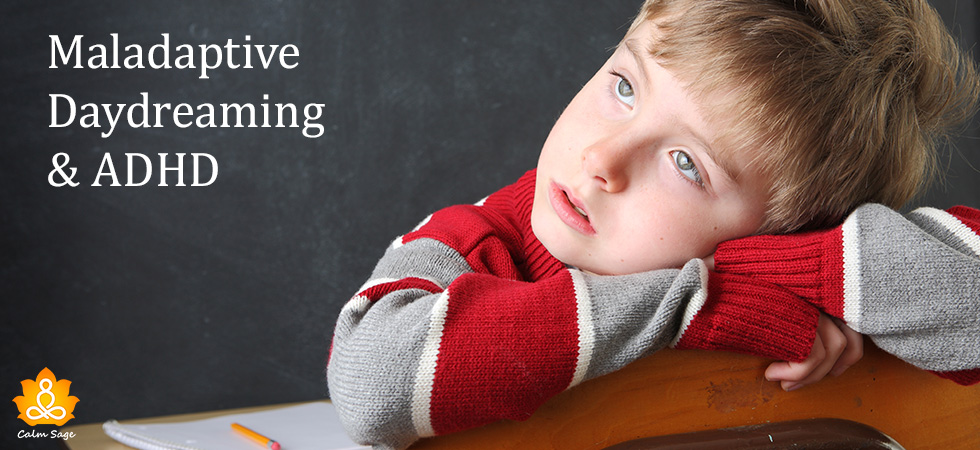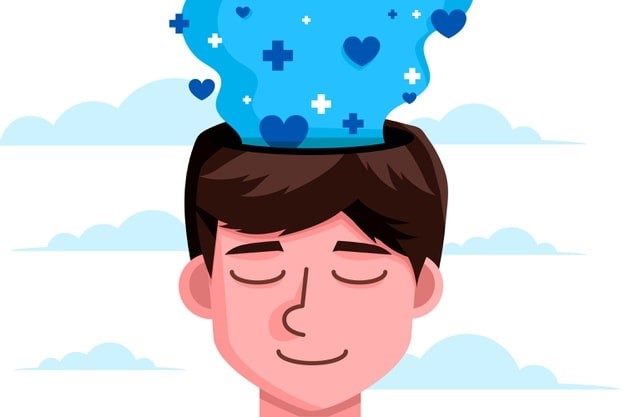Is Maladaptive Daydreaming A Sign Of ADHD?

We all can dream and often we find ourselves daydreaming. Daydreaming can be a wonderful tool to escape conscious reality but excessive daydreaming or maladaptive daydreaming can interfere with our real-life situations. Many people on social media have questioned that is maladaptive daydreaming a symptom of ADHD?
In many cases, maladaptive daydreaming, a psychiatric condition, occurs in people who are dealing with traumatic and abusive pasts.
In people with ADHD, Daydreaming allows them to escape those experiences and memories. Simply put, maladaptive daydreaming in ADHD is just a coping mechanism.
However, in this article, we’ll be exploring the connection between maladaptive daydreaming and ADHD and answering the big question; is maladaptive daydreaming a symptom of ADHD?
Let’s start by re-visiting what is ADHD and MD (Maladaptive Daydreaming).
What Is ADHD?

ADHD (Attention Deficit Hyperactivity Disorder) is a mental health disorder that causes abnormal hyperactivity and impulsive behaviors. People and children with ADHD face trouble keeping their focus and attention on one task for long periods. They also find it difficult to stay still for long periods.
There are three types of ADHD:
- Predominantly inattentive
- Predominantly hyperactive-impulsive
- Combined (Hyperactive0impulsive and inattentive)
Many behavioral traits can be linked with ADHD but some common symptoms of ADHD can be:
- Having trouble keeping the focus on one task at a time
- Being forgetful
- Getting easily distracted
- Having trouble staying still
- Having a short attention span
- Having a habit of interrupting people
If your child has these symptoms of ADHD, it is recommended you seek counsel from a mental health professional.
Related: ADHD In Girls: Understand ADHD Signs In Teenage Girls
What Is Maladaptive Daydreaming?

Maladaptive daydreaming or excessive daydreaming is a psychiatric condition that causes people to experience vivid dreams, ones that can make it difficult (but not impossible) for them to distinguish between reality and fantasy. Maladaptive daydreaming – ADHD or not – can cause serious interference in a person’s work, academic, and social life.
Common symptoms of Maladaptive daydreaming can be:
- Experiencing highly vivid daydreams
- Experiencing abnormally long daydreams
- Having an inability to focus on daily tasks
- Daydreams triggered by listening to music, watching television, etc
- Experiencing insomnia and sleep problems
If you or someone you know is experiencing these symptoms, it is suggested you reach out to a professional for proper medical care.
Also Read: Why Boredom Can Be Good For Your Psychological Health
Is Maladaptive Daydreaming A Symptom Of ADHD?

Daydreaming occasionally does not mean that you have a psychiatric condition. However, if you’re dealing with symptoms of ADHD, you might excessively daydream.
There is a significant difference between creative thinking and daydreaming. A creative mind that daydreams might be a person with ADHD or they might not. If you’re not someone with ADHD, you’ll find that you can easily snap yourself out of a dream state but if you’re someone with ADHD, the ADHD daydreaming is intensified and it can be more difficult than normal to snap out of that state.
Also Read: ADD and ADHD: Are They The Same?
In the end, it all comes down to the brain’s ability to snap you out of your dream-like state. Our brain is responsible for making sure we move from one task to another and if you don’t have ADHD, you can find that ability is not hindered. But, for someone with ADHD, their brain’s ability to move from one task to another might be impaired.
Also Read: Debunking These Common Myths About ADHD Is An Absolute Urgency!
For instance, your child is prone to ADHD daydreaming and while you are aware of their daydreaming, they might likely be unaware of it and hence have a difficult time snapping out of that state.
In another instance, a person prone to maladaptive daydreaming with ADHD can become more intense than those without ADHD engaged in daydreaming.
If your child, say, for example, is daydreaming and you’re calling their name, likely, they will not hear you. In such a case, you’ll need to be in their direct line of vision to get their attention. This situation of excessive daydreaming in people with ADHD can cause a lot of interference when it comes to their academics, social life, future relationships – work and personal.
When it comes to exploring the link between maladaptive daydreaming vs. ADHD, there is much research to be done but from the existing research and studies, it can be said that there is some connection between maladaptive daydreaming and ADHD.
Related: Podcast Ep. 29 – Learning About ADHD: Understanding The Struggle
What Research Says…
In a new study, it was found that maladaptive daydreaming can be a better diagnosis than ADHD for certain people. This study assessed 83 ADHD adults and found that 1/5th of the ADHD adults met the criteria for MD or maladaptive daydreaming with ADHD.
The lead researchers assessed the ADHD adults for other symptoms such as inattention, depression, loneliness, self-esteem, and MD. The ADHD adults who met the criteria for maladaptive daydreaming had higher rates of depression, loneliness, and poor self-esteem than other ADHD adults.
Even now, maladaptive daydreaming in ADHD is not recognized as a formal diagnosis in the DSM and while more research on maladaptive daydreaming in ADHD is needed, the recognition of the coping mechanism is growing.
Can Maladaptive Daydreaming Be Treated?

If you or someone you know shows signs of excessive daydreaming and are dealing with symptoms of ADHD, it is recommended you see a therapist. While there are no such treatments available apart from seeking therapy, a psychiatrist may prescribe medications and CBT (cognitive behavioral therapy) to help manage excessive daydreaming.
Also Read: How CBT Dismantles ADHD Negativity
Online-Therapy
Best at providing Cognitive-behavioral therapy

- Excellent qualified, certified, and trained therapists
- Unlimited communication with the therapist via video, audio, and chat
- Offers a therapy toolbox with access to worksheets, journals, and more
- Affordable weekly subscription plans to pick from
In Conclusion
Many people with ADHD might show symptoms and signs of maladaptive daydreaming and vice versa. While daydreaming isn’t bad -, is one of the tools to help cure boredom – in excessive bouts, it can be dangerous to a person’s mental and emotional health.
For children as well as adults, untreated maladaptive daydreaming and ADHD can have a significant impact on their daily life. Getting the right treatment from a mental health professional is important.
We hope this article answered the big question; Is daydreaming a symptom of ADHD?
And while it can be difficult to identify the signs and symptoms of ADHD and MD, it is important to understand that people with MD can show signs of ADHD and vice versa.
For more information, you can always write to us at info@calmsage.com or connect with us via our social media pages.
Remember, you are not alone.
Take care and stay safe.




















